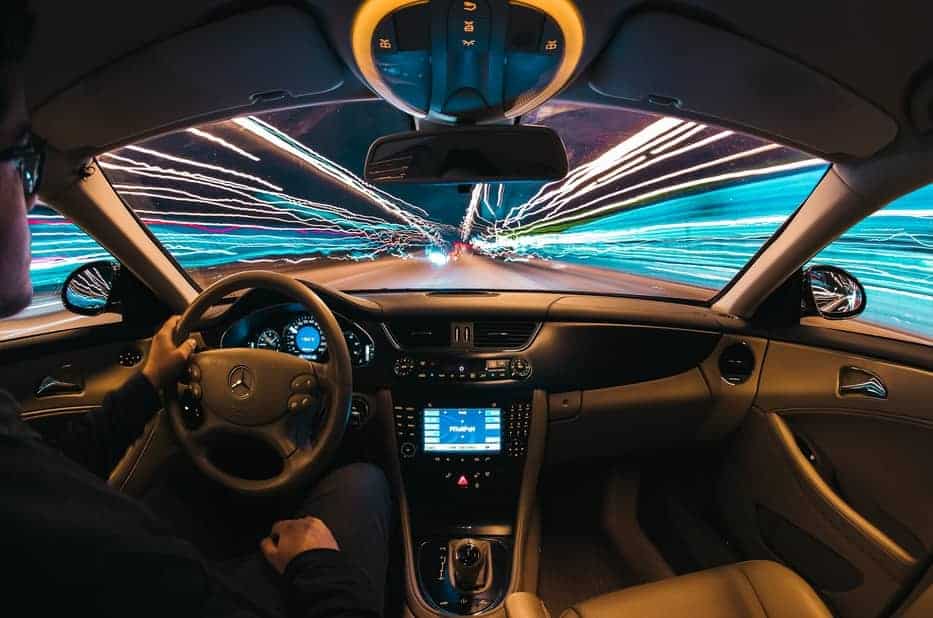
Like most people, I love leaving my USB cables and chargers in my car so that I do not have to remember bringing them to and from my house every day. But in the back of my mind I always wondered if leaving them plugged in to the car’s USB port or cigarette lighter was safe.
So is it safe to leave a USB cable plugged in your car? USB cables and chargers draw a small amount of energy when plugged in, and are safe even when the car is off. However, this depends on if there is a device charging, if power still runs even when the car is off, and how long the car will be sitting before running again.
In most cases, and in most modern cars and trucks, leaving a USB cable or charger plugged in will not quickly drain the battery while the car is off. But there are a few cases where it is probably wise to remember to unplug them each time.
Check If There is a Device Still Plugged In
When it comes to having smartphones connected to the USB cable and charging while the car is running, its battery can more than handle the small extra load of energy that is required.
But when the car is turned off it relies on its onboard battery to continue powering any accessory that are necessary, such as if a radio is still running, anti-theft alarms, and the internal memory that runs GPS units in the dash.
Each of these sources on their own do not draw that much battery while the car is off, but cumulatively can create a substantial power load.
USB cables and chargers with no device connected to not draw that much power, even while the car is turned off. But if there is a device that is still connected, such as a smartphone, tablet, or laptop, then this adds another source that the battery needs to charge.
So to make sure that any extra sources are not adding to the load on the car’s battery, it is best to play it safe to avoid the dead battery and unplug devices from the USB cable as soon as the vehicle is turned off.
Power Outlets and Ports May Still Run Even When the Car is Shut Off
Do you remember having a phone or laptop plugged in to your car and charging while you were driving, just to discover that it won’t charge after the car is off?
This is actually normal. Many modern cars and trucks today have this feature as standard so that in case any electronic device is left plugged in on accident it will not pull unnecessary load on the car’s battery.
You may also find that in some cases, especially with USB ports, that devices that are still connected continue to charge even after the car is shut off.
Although these power sources are less common than the power-switch-type outlets, they are quite a number of manufacturers that still have these built in to their cars and trucks.
In some cases these power sources stay on a timer and then eventually shut off after the vehicle is off, but it is important to be mindful of where these ports might be on your vehicle and if they are on a timer or forever active power.
So how can you find out which power outlets or cigarette lighters in your car or truck have switches or stay active?
Most manufacturers will have a note inside of the owners manual that came with your vehicle specifying which power sources have switches and which do not.
Another way is to test each power source yourself. Leave a device connected to the USB cable or charger and watch if the device stays charging or stops after the vehicle is shut off. This will determine if that specific outlet has a switch or if it runs constant power from the car’s battery.
If the outlet or cigarette lighter does not have a power switch and stays powered on even when the vehicle is off, there should not be any USB cables, charger, or devices left plugged in so that a dead car battery is avoided.
Avoid Leaving USB Cables Plugged in if the Car is Left Off After a Long Time.
Most newer car batteries can sustain the loads that accessories require from them after it sits off for a few days. But over extended periods of time (weeks and months) even the best batteries do not receive the charge they regularly need from the alternator, and thus, the risk of dying greatly increases.
If you plan to leave your car sitting for more than a few days, such as at the airport or the carpool parking lot, then it is best to unplug all USB cables and charges from the power ports.
While the vehicle is off there are still certain accessories that stay powered, such as power locks, radio memory, and remote start modules.
Older batteries tend to die quicker when left without any power from the alternator after longer periods of time.
Also cars that are loaded with more premium options such as power seats, remote GPS, and keyless ignition draw substantially more load on the battery when off for a while.
This is why many owners who have high end exotic cars either leave their batteries disconnected when their cars are not being driven or they maintain the charge via a battery tender.
Therefore its best to check what accessories will most likely stay running as your car or truck sits shut down for that length of time, but even safer, it is best to avoid leaving USB cables, chargers, and devices plugged in to the power outlets while it sits.
Some Other Safety Factors to Consider
The above three safety suggestions are important to remember when considering leaving USB cables and chargers plugged in to your car. But I want to also bring up three additional factors that can affect the safety as well:
- USB Cable and Charger Appearance to Car Thieves
- Extreme Hot and Cold Climates
- USB Cable Stress and Reliability
1. USB Cable and Charger Appearance to Car Thieves
USB Cables and Chargers, like purses and jewelry, are attractive objects that can be stolen by car thieves if left out in the open.
However one nifty tip to mitigate this theft risk is if the cable closely resembles the color of the interior. So for instance if your interior is black, then a black colored USB cable will not show as much as Apple’s factory white color. Here is a Black Braided USB cable by Anker for Apple products that I have personally bought from Amazon and use all the time.
I can say that this cable blends in extremely well with the black-colored interior of my truck and sometimes even have trouble finding it in my glove box at night (I still ate my veggies as a kid!).
2. Extreme Hot and Cold Climates
Most electronic devices are designed for indoor use, which means that it can operate reliably within a certain range of temperatures, usually between 45 to 90 degrees Fahrenheit (7.2 – 32.2 degrees Celsius).
Depending on where you live, the interior of your car can be exposed to climates that are well below or above these temperatures. If that is the case this can put stresses on all parts of the USB cable and charger, including the plastic housing, metal ports, and the outer wire coating.
For cars that are exposed to these more extreme climates it is best to unplug the USB cables and even keep them inside where it’s warmer or cooler so that it will last much longer.
3. USB Cable Stress and Reliability
A deal that seems too good to be true, especially when it comes to USB cables and chargers, most likely is too good.
There are a lot of very inexpensive USB cables on the market that undercut those of OE manufacturers like Apple, Samsung, OnePlus and Google. But when it comes to having them around the car its best to stick to the premium options.
It is only human that we like to have stuff laying around in storage compartments and cup holders in our cars. And that bending and pulling definitely puts stress on the components of USB cables.
Cheaper cables and chargers will not only be less reliable because of the charge and sound quality, but also because the wires can come apart from the actual plug and/or fray apart through the coating.
This can pose as a safety hazard not only to the vehicle but also to you since it can cause a short or a potential shock.
So to ensure the best safety possible choose a cable for your car that is approved by the device manufacturer and also has reviews of reliability so that it will withstand lots more mileage than its cheaper counterparts.
